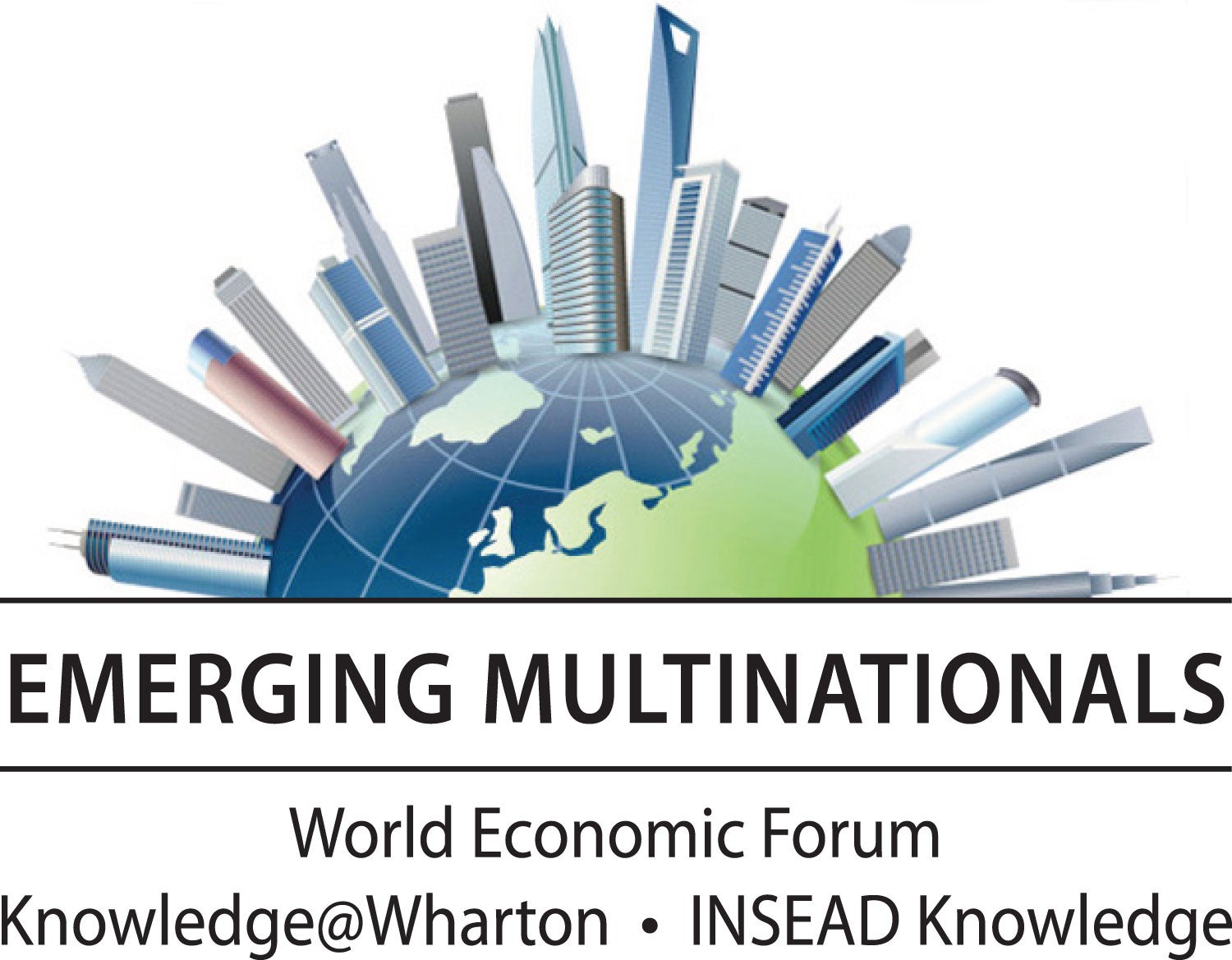Millions of Americans fly on planes made by Embraer. They may even know the name of the aircraft manufacturer. But if they had to guess what country Embraer is from, many would probably guess wrong.
Embraer is from Brazil. It is the largest manufacturer of regional jets in the world and among the top five aircraft manufacturers globally. “In a high-tech area as regional jets, the largest firm at present happens to be from Brazil. Who would have anticipated this a few years ago?” says Mauro Guillen, a Wharton professor of international management.
Increasingly, companies from developing countries such as Brazil, India, China and Mexico are becoming global leaders and eclipsing familiar brands in the developed world. Take Alibaba, the e-commerce giant from China. It has a market value greater than Yahoo, Netflix, eBay, Yelp, LinkedIn, Twitter and Groupon put together. Alibaba’s cloud service Aliyun is giving Amazon Web Services a run for its money. South Korea’s Samsung is the world’s largest consumer electronics firm, outselling Sony, Panasonic and Philips. Bimbo of Mexico is the largest bakery company; in 2010, Bimbo purchased Sara Lee’s North American bakery business. And on this year’s Forbes Global 2000 list, although the U.S. still claims the maximum spots, the top four are occupied by Chinese banking firms.
The phenomenon of emerging multinationals (EMs) — successful companies from the developing world — isn’t going away any time soon, according to a report from the World Economic Forum’s Global Agenda Council on Emerging Multinationals. The trend is being fueled by the growth of emerging markets themselves: During 2000 to 2010, developing and emerging markets accounted for 60% of the incremental world GDP. And over the next decade, most of the world’s population growth will be located in emerging economies, giving rise to new consumers and larger markets.
“In a high-tech area as regional jets, the largest firm at present happens to be from Brazil. Who would have anticipated this a few years ago?” –Mauro Guillen
Shaped by Limitations
How are EMs managing to succeed on a global scale? Most experts agree that innovation is a major factor. But what is the nature of that innovation, and what is its source?
According to Wharton’s Guillen, even as EMs try to become like European or American firms, they are “forced to be different.” Says Guillen: “They were born in environments in which it was not easy to innovate. You wouldn’t have the engineers; you wouldn’t have the resources, the inputs needed.” Government regulations, political instability and economic volatility pose additional stumbling blocks. But, as a result of these limitations, Guillen notes, EMs “see huge dividends” because “if you learn how to become competitive with few resources, it means that you’re being innovative.” Companies that learn this skill will benefit over the long run, he adds.
One EM that began life with very little by way of resources — US$250 in capital, to be exact — is Infosys, the global technology consulting company from India. Founded by seven engineers in 1981, Infosys became the first information technology (IT) company from India to be listed on the NASDAQ in 1999. Today, it boasts a market capitalization of approximately US$40 billion.
S.D. Shibulal, co-founder and former CEO of Infosys, credits his firm’s signature innovation, the global delivery model, as a major source of its success. “Global delivery model is a methodology by which you can disaggregate a project and a program, get it done in different parts of world, and give it back to the client, seamlessly,” explains Shibulal. He contrasts this model with the way IT work was typically conducted at the time: “Let’s say you had a [project to execute] in New York. Twenty people from all over the world [would] fly into New York, do the work, and go back. It was all about taking the worker to the work. The global delivery model is all about taking the work to the worker. It fundamentally changed the industry.”
According to Shibulal, adopting the global delivery model was a leap of faith. The fledgling company gambled that technology would become ubiquitous, and that the technology industry would become globalized. “[Now,] it looks like a simple thing to do, but in 1981 … it was not an easy bet to take. We were way ahead of the time.”
Anil Gupta, chair in strategy, globalization & entrepreneurship at the Robert H. Smith School of Business at the University of Maryland, notes that Indian companies like Infosys and Tata Consultancy Services “basically came from nowhere over the last 20 or 30 years” and changed the face of the IT industry. He points out that of the top five IT service companies in the world today, three are Indian and two are American. “The Indian companies have become much bigger than other IT services companies that used to exist, like Electronic Data Systems. They have pushed them aside and are going head to head against Accenture and IBM Global Services.”
From Mini Fridges to the Human Genome
Describing the approach taken by many EMs of focusing on relatively simple needs in American markets, Guillen says: “They improved existing products; they made them easier to use and cheap to produce.” Some EMs like Haier from China, he notes, exploited niche markets by “appealing to a group of customers that established companies didn’t care about.” In its early days, Haier targeted college students and made small refrigerators for dorm rooms.
“Haier looked at the characteristics of the customers in Shanghai and created a washing machine that was tailored to those unique characteristics.” –Anil Gupta
Gupta adds that Haier also targeted a niche Chinese market — Shanghai apartment-dwellers. The company came up with a small washing machine designed for laundering a minimal amount of clothing frequently, designing it for the income level, space requirements and lifestyle of this demographic rather than following an American model. “Haier looked at the characteristics of the customers in Shanghai and created a machine that was tailored to those unique characteristics,” says Gupta. Today, Haier is the largest appliance brand in the world. According to The Economist, the company’s revenues have gone up fourfold since 2000, and it is considered one of the world’s most innovative firms.
Gupta divides EM innovations into two categories: market-driven and technology-driven. According to him, the bulk of EMs’ innovations tend to be highly market-driven. He places Haier’s innovation in this category. “It has very little to do with technology. It’s really market responsiveness and market-driven innovation,” says Gupta. He ranks another Chinese company, the medical device-maker Mindray Technologies, also in the same category. “Essentially, their competitive advantage is to develop and market lower-priced medical devices.”
Commenting on the success of Bharti Airtel, India’s number-one telecom operator, which engaged in what Gupta terms “extreme outsourcing” — it outsourced its entire network to Nokia and Ericsson and all its business processes to IBM — Gupta notes: “Airtel found an innovative way to use the expertise and skill of [those companies] and reduced its cost structure without sacrificing the quality of service.”
For technological innovation, Gupta points to Huawei Technologies, the leading telecom equipment company in China and among the top three worldwide. Describing the firm as a “technology powerhouse,” Gupta says that the number of patents it has received from both the U.S. and European patent offices indicates that Huawei is developing “next-generation technologies.”
“[Adopting the global delivery model in 1981] was not an easy bet to take. We were way ahead of the time.” –S. D. Shibulal
Guillen notes that some of Brazil’s EMs are engaging in technological innovation as well, working on environmentally oriented projects such as how to produce energy or plastics out of ethanol, and developing cosmetics that use natural ingredients. There are companies in India, he adds, that are combining IT with the human genome and becoming specialized suppliers to hospitals and doctors who need to analyze a patient’s genetics for various conditions. Guillen believes these companies “are just about the best in the world” at performing this service, and at a very competitive cost.
The Recipe for Success
In the near term, which innovative EMs will succeed and which will not? According to Gupta, EMs would do well to shift their focus from market-driven innovation to technological innovation. “Just look at what’s happening on the digitization frontier — whether with smartphones, or driverless cars, or whatever. In terms of technology-driven innovation, emerging multinationals (with two or three exceptions like Huawei) are far behind.” He adds that technological innovation is easier to take global, because it is more “portable” and not married to the needs of one particular market. Another factor for success, in Gupta’s opinion, is that EMs need to be private-sector companies which have “a much stronger incentive to innovate and succeed” rather than state-owned enterprises.
Shibulal agrees that market-driven innovations do not always easily transcend the borders between the developed and developing worlds. In the Western world, innovations are about making things “bigger, smarter, faster.” but these are not necessarily the qualities the rest of the world is looking for. For India and China’s growing middle class, for example, affordability and durability are more important, and products need to be lean rather than bulky.
Adds Guillen: “If you go to China, you won’t see GE electrical appliances; you’ll see Haier all over. Or, if you go to India, you’ll see a lot of Tata cars. You won’t see that many Chryslers.” Within 10 or 15 years, India and China combined will be a larger market than the U.S. and Europe combined, so many EMs will have the advantage. “They will be the biggest in the world and the better-known.”




